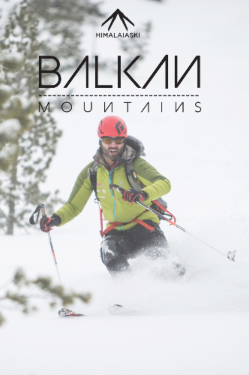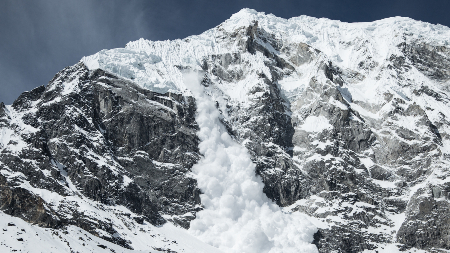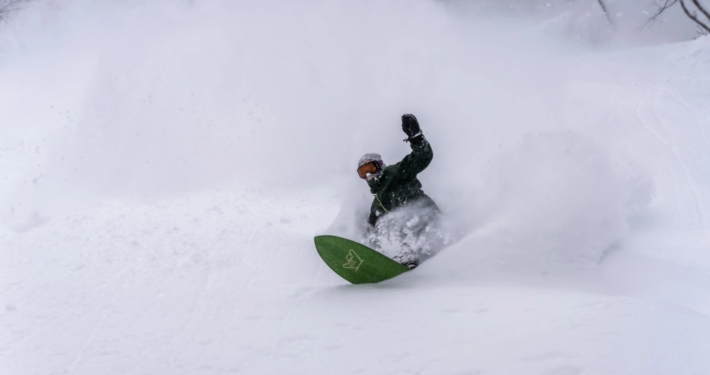If what you are looking for is changing snows and the most beautiful mountains on the planet, surrounded by forests and lush jungles and wonderful people who will make your visit feel like being in your own home, you should consider taking your skis to the Himalaya.
There is a question that is always repeated when I am with mountain skiers lost in any unknown massif:“Where is the best place to ski on the planet?”
And I, well, I answer that it is a very difficult question. That everything will depend on what you are looking for. If you’re looking for perfect powder and a great descent, you might want to target Alaska. If, on the other hand, you are looking for unknown, wild and very difficult to access places, you can think of Arctic, but if what you are looking for is changing snows and the most beautiful mountains on the planet, surrounded by forests and exuberant jungles and wonderful people who will make your visit feel like being in your own home, you should consider taking your skis to the Himalayas”.
Jordi Tosas
Director of B4 Experience
WHERE? WHEN? AND FOR WHOM?
The Himalayas are a very long mountain range, stretching many miles between Bhutan and Pakistan. Throughout those kilometers the amount of snow it receives depends a lot on the area and especially if we talk about the north or south of the mountains. This snow is linked to the precipitation regime and above all the influence of global circulation.
The 3 questions assume an equation of 3 unknowns with multiple correct answers, all intertwined with each other. To simplify the equation a bit we will focus on Nepal.
WHERE DOES IT SNOW MOST IN NEPAL?
If I look at Nepal longitudinally, to the east I find the Kanchenjunga massif, already bordering Sikkim. Well, from the Kanchenjunga Massif to the Everest massif itself or we can say the Khumbu valley is the driest area of the Nepalese Himalayas. The one that receives less snow.
From Everest to Manaslu, passing through Lantang, there are areas with a lot of snow, we begin to enter the valleys that remain white most of the winter.
From the Annapurna valley to the west is where we will find more snow. The large amount of snow that the lost valleys of the Far West Nepal receive stands out. This is due to how the humid masses of the Indian Ocean move on their journey to the slopes of the great mountains.
WHEN DO WE HAVE TO GO SKIING IN NEPAL?
The “when” is linked to what type of activity we want to do and how much time we have to do it.
The first thing is to understand the rainfall regime of Nepal. In Nepal there are no four seasons like ours: spring – summer – autumn – winter. The rainfall regime is marked by the Monsoon.
Himalayan winter:
It is a very cold season. It starts being very dry during the months of December and January. It is not until the end of January and February that the humid masses can penetrate and the heavy snowfalls begin. Another characteristic of winter is that the jet stream, very violent winds at altitude, are very low in the atmosphere. This means that from 6000/6500m the snow that falls cannot stay, it is literally swept away by the strong winds. It is the ideal time to ski at the bottom of the valleys (never below 4,000m). If we have a few days it is the ideal time, it will not be necessary to have many days to acclimatize.
The Pre-monsoon:
spring is defined by a rise in temperatures that melts the snow in the valleys, returning them to the green color of the jungles. Perhaps the last snowfalls have coincided with the increase in height of the Jet Stream and the six thousand and seven thousand have remained white. We can divide this period into two parts:
-
From the end of February to the beginning of April we can enjoy excellent snow at medium heights, it is the season for heliskiing in the Annapurna area
- From mid-April to mid-May is the ideal time to climb eight thousand miles on skis. But think that we will find very hard snow, wind sheets, ice…
The Monsoon :
It lasts approximately from June to early September and is marked by continuous heavy rainfall and high tropical temperatures. While in the valleys the rain often reaches 5500/6000m, the high mountains accumulate large amounts of snow, and the strong jet winds are very high in the atmosphere, so the snow remains on the tops.
The Post-monsoon:
It starts in September, it usually starts with a large amount of accumulated snow from 6500m. With big avalanche problems in many cases. It is the time to acclimatize and wait for the snow to settle. From the beginning of October to December, with its clear days, with an autumn cold that is settling in and without winds, are the time to ski the giants of the Himalayas.
We can carry out ski mountaineering activities from 5,000m. We must have days to acclimatize and the possibility of accessing peaks of 6000, 7000 and 8000m with skis. For years we have held a “HIMALAYA ALPINE SCHOOL” every autumn in different areas of Nepal (from Langtang to the Far West).
WHO CAN GO SKIING IN NEPAL?
The first thing is that you have to be aware that it is skiing in the Himalayas. We do not ski in a ski resort, with a BPA, helicopter and a rescue team that will take us out after 10 minutes of calling and après ski…
We must have a minimum of an average level of off-piste skiing. There are routes of all difficulties, from comfortable crossings without any technical difficulty to activities of extreme difficulty, so we can adapt the difficulty of the routes to be carried out at the level of the group.
If you want to enjoy skiing in Nepal, at the foot of an eight-thousander with all the comforts and without great effort, Heliskiing on Annapurna in Spring is your best option.
If you have a few days (minimum 10 to 15 days) and you are looking for the best powder snow in Nepal, your option is a getaway between February and March. The northern area of Annapurna and the Langtang area for its easy and quick access are some of the options.
If you have 25 to 30 days you can go in spring or autumn to make some descents in mountains from 5,500m to 7,000m.
WHAT IS THE HIMALAYAN ALPINE SCHOOL?
For those who want to enter the great peaks of the Himalayas outside of commercial expeditions, we have created this “Himalayan school”.
On October 15 we start this year’s Himalaya Alpine School. This year the activity will be carried out in the northern area of Manaslu.
there is a little-exploited region with mountains between 6,400 and 6,900m, some virgin and several with the possibility of opening new routes of all difficulties, even with skis.
We manage all the logistics up to the base camp. The different teams can pursue different objectives at the level of each one or unite to achieve a common objective. Always in complete autonomy, without fixed ropes or height porters and at all times we coordinate and are advised by Jordi Tosas and our team in Nepal.
“LEARN BY DOING AN EXPEDITION!”
Want to see the whole movie? > “Himalaiaski, the beginning of a new adventure” which we recorded at one of our first Himalaya Alpine Schools in February 2015.
Skiing in the Langtang Valley


























